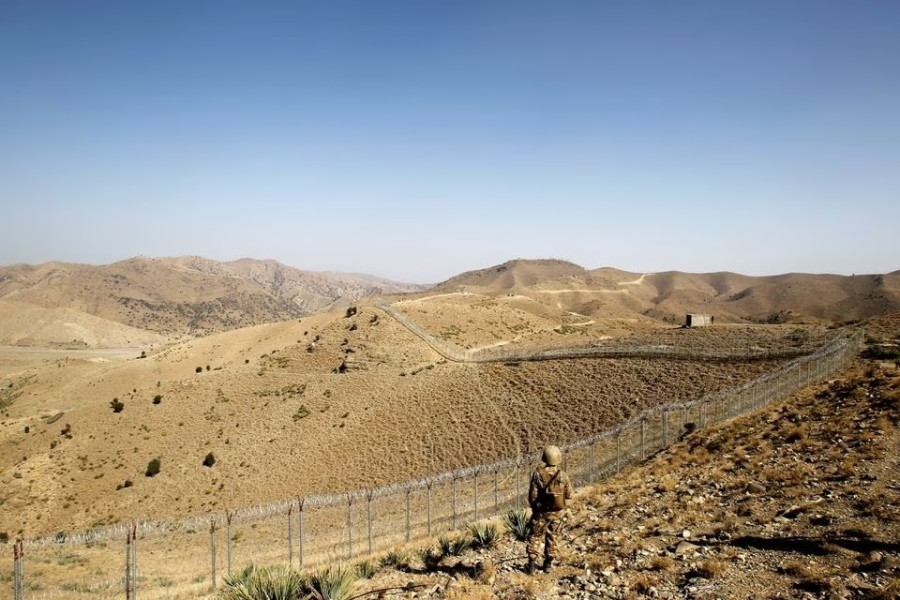Columns
Fault lines along the Af-Pak border
There might be frequent border clashes as tribes across the Durand line are unlikely to accept an artificial division.
Smruti S Pattanaik
On February 20, the Taliban accused Pakistan of reneging its commitments to Afghanistan and announced the closure of the Torkham Border in the eastern Nangarhar Province. This announcement came after a reported clash between Afghan and Pakistani troops, resulting in the injury of one Pakistani soldier. In November and December last year, border clashes resulted in the border closure. In December, seven civilians were killed due to shelling by Taliban fighters; and, as Pakistan retaliated, it killed one Taliban fighter and injured many. According to the Taliban, Pakistan had agreed to allow Afghans without official documents to travel to Pakistan for medical treatment. Recent clashes, along with other issues, have emerged as major contention between Afghanistan and Pakistan.
Pakistan has always believed that the return of the Taliban will ensure stability in its tribal area and help the country’s security. It is not surprising that when the Taliban took over power in Kabul in August 2020, Islamabad was in a celebratory mood. Former Pakistani Prime Minister Imran Khan described the Taliban’s victory as “breaking the chains of slavery”. Though Pakistan played a significant role in ensuring the Taliban’s return and in seeing some leaders assuming important positions in the cabinet, especially the installation of Sirajuddin Haqqani as Interior Minister, the Taliban did little to assuage Pakistan’s security predicaments. Rather, incidences of terrorism have increased after the Taliban takeover of Kabul. The first thing the Taliban did was to open the jails that held several Taliban fighters as well as the Tehrik-e-Taliban Pakistan (TTP).
The bonhomie between the two died down as Afghanistan was reluctant to hand over the TTP, which is responsible for several incidents in the country and has always operated with ease across the porous border between the two countries. Both the Taliban and other regimes installed by the West do not recognise the Durand line as an international boundary. However, Pakistan started to fence the border in 2017, when Afghanistan was being led by Ashraf Ghani, and spent $532 million to fence 83 percent of the border. Fencing has been a contentious issue between the two countries as Afghanistan contests the legality of the Durand line. In December 2021, the Taliban fighters stopped Pakistan from fencing nearly 2,700 kilometres of the border. Taliban Commander Mawllawi Sanaullah Sangin said they would not allow the border fencing. In fact, the Taliban has tried to dismantle the border in many places. Ironically, it is the porous border that allowed Pakistan to shelter the Taliban leadership post-US war on terror. It also helped to keep the flame of the Taliban insurgency alive and launch attacks on Western forces. Western countries often pointed to these sanctuaries as the root of violence in Afghanistan.
Torkham and Chaman: Economic Lifeline of Afghanistan
Both Torkham and Chaman border points are major crossing points out of the 18 that exist between the two countries. While blaming Pakistan, Afghanistan’s Ministry of Defense tweeted, “Unfortunately, today there was another shooting by Pakistani soldiers in Spin Boldak district of Kandahar province, Afghanistan, and it’s caused clashes.” The volume of trade, as per a report, increased last year and data of July-August and September showed Pakistan traded $2.3 million worth of goods. It is also a major trading point for Pakistan with Central Asian countries as Islamabad is in the process of signing an agreement to boost its trade and is expecting that this border point would see 150,000 commercial vehicle movement. These frequent clashes do not further Pakistan’s trade interests.
Pak Taliban challenges
In the past two years since the Taliban captured power in Kabul, there have been instances when the two parties exchanged barbs over cross-border issues. While the Taliban expected Pakistan to stop Islamic State-Khorasan Province (ISKP) fighters from crossing the border, Islamabad said it was very difficult to verify those crossers as ISKP cadres as they carry travel documents like any other passenger. Similarly, Pakistan has frequently accused the Taliban leadership of providing safe haven to the TTP leadership that has been able to launch a successful attack in Pakistan targeting Army and Police, as it happened recently in Karachi.
Though the Taliban midwifed the short-lived ceasefire between the Pakistan government and the TTP, the two sides accused each other of violating the understanding, and the TTP finally called off the cease-fire, accusing Pakistan of not honouring its commitments. However, as a precondition to the truce between the TTP and the government, Pakistan freed several Taliban fighters who were in jail and said that they were “low-level fighters”. Many in Pakistan argue that this was a wrong decision by Gen Faiz Hameed, which eventually led to discord between him and Army Chief General Bajwa. The accusation and counter-accusation between Afghanistan and Pakistan over the TTP reached its peak when Pakistan’s interior Minister Rana Sanaullah threatened that his country had the right to attack the TTP hideouts across the border and the Taliban tweeting a photograph of Pakistan Army’s surrender in 1971, said it will face the same consequences.
The Taliban shares a close relationship with the TTP, which contributed to its victory. Therefore, the Afghan Taliban are grateful to TTP. Given how the Taliban faces challenges from Daesh or the Islamic State of Khorasan, it will not be easy for the Taliban to give up its partnership with the TTP. While fencing may establish a clear border between the two and, to some extent, address unauthorised border crossing it has divided families belonging to Atmarkhel, Mamund, and Wazir tribes living across the border bound by centuries-old customs and traditions. Many farmers have lost their land as they were not able to cultivate the land that lies across the border.
Pakistan remains a major source of imports for Afghanistan; trade has increased after the Taliban took over power. Pakistan allows Afghan trucks to move freely in Pakistan under a temporary admission document, and Pakistan trucks are not allowed beyond Jalalabad. These issues remain a sticking point. The recent closure of the border resulted in huge losses for Pakistani businessmen who trade across the border paying $160 as a detention charge per day. Each truck is paying 6,000 Pakistani rupees as a holding charge daily. Afghanistan is dependent on Pakistan for its external trade as well as for its daily necessities. Such border clashes resulting in the closure of borders also impact the prices of essential commodities in Afghanistan. Many who come for medical treatment in Pakistan also face this problem.
While borders have always been a part of geopolitical contestation since 1947, Pakistan has expected a closure to the Durand line issue after the Taliban took over in Kabul. However, the Taliban has never accepted the Durand line–even when they ruled Kabul between 1996 and 2001. These border clashes are likely to be a regular feature as tribes divided across the border are unlikely to accept the division by a fence as Pakistan’s security predicaments would continue.




 8.12°C Kathmandu
8.12°C Kathmandu















